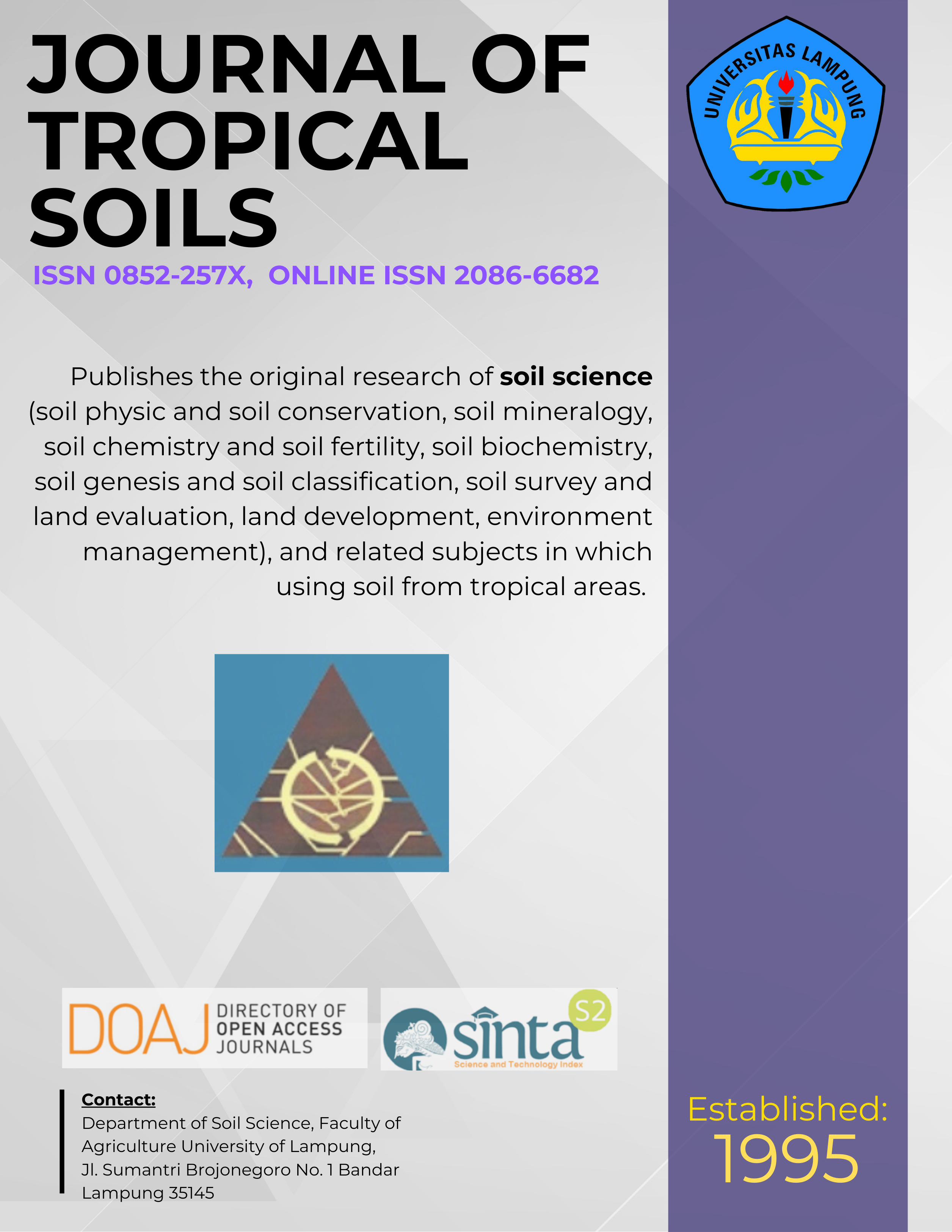Land Characteristics of Batang Pelepat Watershed in Bungo District, Jambi
Main Article Content
Abstract
Land Characteristics of Batang Pelepat Watershed In Bungo District, Jambi (Sunarti): Land characteristics describe biophysics characteristics of watershed. But, land has been used for economic oriented. The objective of this research is to identify land characteristics of Batang Pelepat watershed. Data collection was carried out by survey based on land unit map and analyzed by descriptive analysis. The results showed that land in Batang Pelepat watershed consist of 23 land units and some land use types (forest, rubber and oil palm farming, settlement and shrub), soil parent materials variously (alluvium, granite, tuff andesite, basalt, and clay rock), soil depth ranges from 88 to 160 cm and soil texture is classified moderate fine to fine. Lands were dominated by slope of >15–30% and >45–65% and dystrudepts of soil group with soil fertility level very low to low because its pH about 3.80-6.20, base saturation about 7.86-32.79% and P- available about 2.80-25.00 ppm. Various land use has also caused different erosion and permeability levels.
Downloads
Download data is not yet available.
Article Details
Section
Articles
License for Authors
Authors who publish with this journal agree to the following terms:
- Authors retain copyright and grant the journal right of first publication with the work simultaneously licensed under a Creative Commons Attribution License that allows others to share the work with an acknowledgement of the work's authorship and initial publication in this journal.
- Authors are able to enter into separate, additional contractual arrangements for the non-exclusive distribution of the journal's published version of the work (e.g., post it to an institutional repository or publish it in a book), with an acknowledgement of its initial publication in this journal.
- Authors are permitted and encouraged to post their work online (e.g., in institutional repositories or on their website) prior to and during the submission process, as it can lead to productive exchanges, as well as earlier and greater citation of published work (See The Effect of Open Access).
License for Regular Users
Other regular users who want to cite, distribute, remix, tweak, and build upon author’s works, even for commercial purposes, should acknowledge the work’s authorship and initial publication in this journal, licensed under a Creative Commons Attribution License.
How to Cite
Land Characteristics of Batang Pelepat Watershed in Bungo District, Jambi. (2018). JOURNAL OF TROPICAL SOILS, 15(1), 73-82. https://doi.org/10.5400/jts.2010.v15i1.73-82

